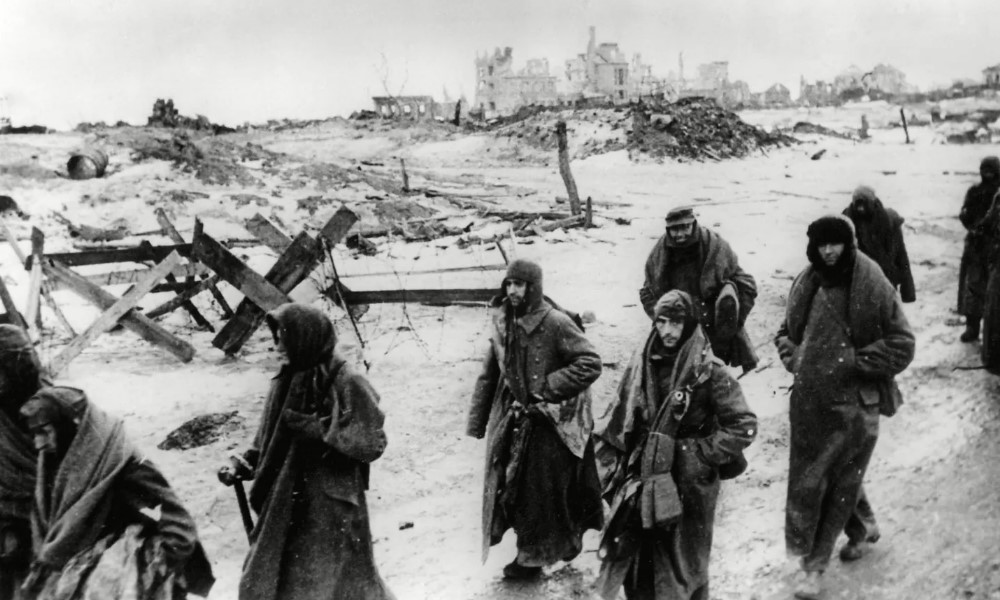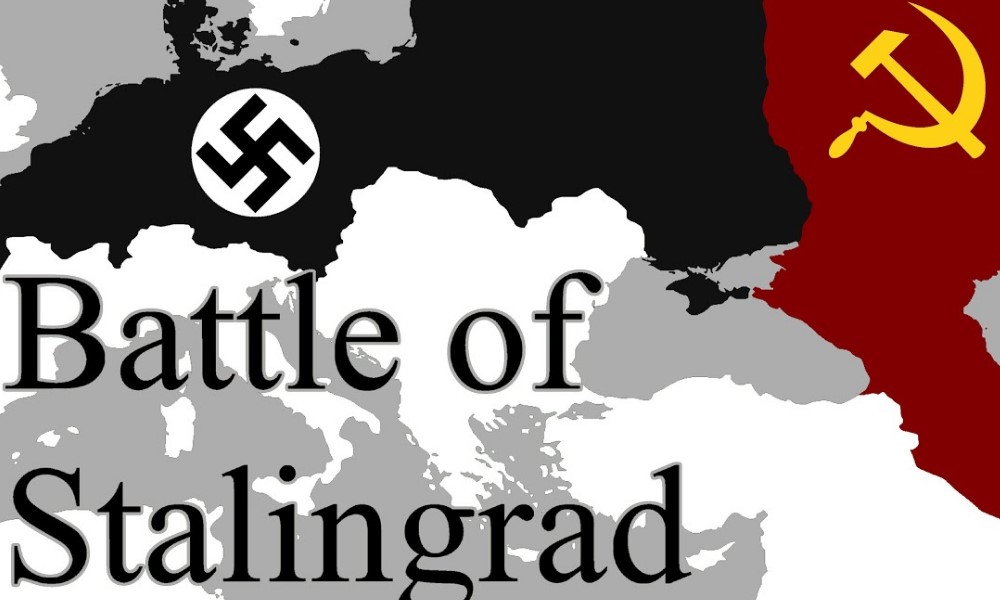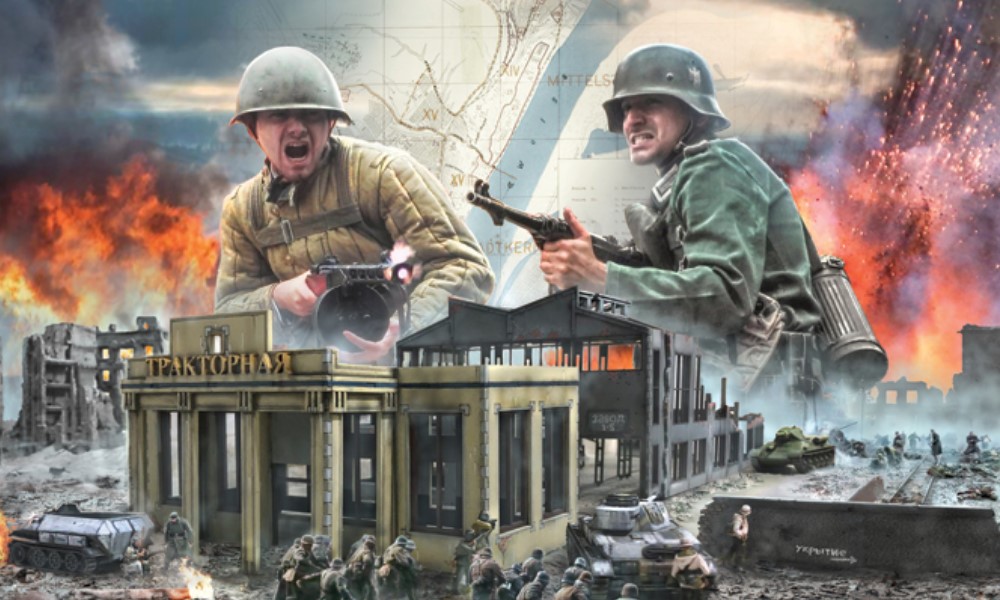The Battle of Stalingrad was not only one of the most pivotal confrontations during World War II but also one of the deadliest. The battle, which raged between August 23, 1942, and February 2, 1943, marked the turning point in the Eastern Front of the war and is often regarded as one of the greatest and bloodiest engagements in human history. Its outcome played a decisive role in the eventual defeat of Nazi Germany.
In this article, we will take an in-depth look at the history of the Battle of Stalingrad, explore strategic insights, and provide detailed recommendations for books, documentaries, collectibles, and other products that can enrich your understanding of this monumental event.
The Historical Significance of the Battle of Stalingrad

The Battle of Stalingrad took place in the heart of the Soviet Union, at a city strategically located on the Volga River. For Adolf Hitler, capturing the city was not just a strategic necessity but also a symbolic victory. Stalingrad bore the name of the Soviet leader Joseph Stalin, and its capture was meant to demoralize the Soviet population and disrupt Soviet military capabilities.
However, the Soviets fiercely defended the city, and the battle quickly devolved into intense urban warfare. Fighting took place in the ruins of buildings, factories, and streets, with both sides committing massive numbers of troops to the conflict. The battle is renowned for its close-quarters combat and the high level of destruction inflicted on both soldiers and civilians.
Key Points of the Battle

The Battle of Stalingrad remains one of the most pivotal and grueling battles in human history. Below are the essential key points that shaped this significant confrontation during World War II:
1. Strategic Importance of Stalingrad
Stalingrad was strategically crucial for both Nazi Germany and the Soviet Union. For Hitler, capturing Stalingrad would secure access to the oil fields in the Caucasus, which were vital for fueling the German war machine. It would also sever key supply routes along the Volga River, crippling Soviet logistical operations. For the Soviets, defending the city was equally vital to prevent the Axis powers from gaining a significant foothold in the south of the Soviet Union, potentially threatening Moscow.
2. Urban Warfare Tactics
One of the defining aspects of the Battle of Stalingrad was its intense urban warfare. Unlike many other battles during WWII, Stalingrad was fought street by street, building by building. The Soviet forces, under the command of Marshal Vasily Chuikov, adopted a close-quarters fighting tactic, ensuring that German forces could not fully capitalize on their superior airpower and artillery. This made the battle exceptionally brutal, with constant engagements taking place in the ruins of factories, homes, and other structures.
3. Operation Uranus
The pivotal moment in the battle came with the launch of Operation Uranus on November 19, 1942. This Soviet counteroffensive aimed to encircle the German 6th Army and its Axis allies by attacking their weaker flanks, which were held by Romanian, Hungarian, and Italian troops. The operation was a massive success, trapping over 300,000 German soldiers inside the city without adequate supplies or reinforcements.
4. The Encirclement and Siege
Once encircled, the German forces were trapped in Stalingrad, cut off from resupply and enduring freezing winter conditions. Despite Hitler’s orders to hold the city at all costs, the situation became increasingly desperate. Food, ammunition, and medical supplies were dwindling, leading to a collapse in morale. By January 1943, Soviet forces had tightened the noose around the Germans, forcing General Friedrich Paulus to surrender on February 2, 1943. This marked the end of the battle and a devastating defeat for Nazi Germany.
5. Casualties and Impact
The battle resulted in staggering casualties. Estimates suggest that the combined death toll was over 2 million, including soldiers and civilians. Stalingrad is often regarded as the bloodiest battle in history. Beyond the immense human toll, the battle also had a significant psychological and strategic impact on the course of World War II. It shattered the myth of German invincibility and gave the Soviet Union the momentum to push westward, eventually leading to the fall of Berlin in 1945.
The Turning Point
The decisive moment came in November 1942 when the Red Army launched Operation Uranus, an encirclement maneuver that trapped the German 6th Army within Stalingrad. With no way to resupply or retreat, the German forces were gradually starved into submission. Despite Hitler’s orders to fight to the last man, Paulus eventually surrendered on February 2, 1943.
Long-Term Impact:
The Battle of Stalingrad had far-reaching consequences that went beyond the immediate outcomes of World War II. Below are the key long-term impacts:
1. Turning Point in World War II
Stalingrad marked the first major defeat of Nazi Germany, shattering its momentum on the Eastern Front. After this loss, the German army was forced into a defensive posture for the remainder of the war, gradually losing ground to the advancing Soviet forces.
2. Psychological Blow to Nazi Germany
The defeat at Stalingrad was a severe psychological blow to both the German military and its leadership. It ended the perception of German invincibility, eroding morale among both the troops and the German public. It also damaged Hitler’s reputation as a military strategist.
3. Boosted Soviet Morale
The victory significantly boosted Soviet morale. Stalingrad became a symbol of Soviet resilience and determination, serving as a rallying point for both military and civilian populations.
4. Shift in Global Power Dynamics
The Soviet Union’s victory at Stalingrad elevated its status as a global superpower. This battle played a key role in shaping the post-war geopolitical landscape, solidifying the USSR’s dominance in Eastern Europe and setting the stage for the Cold War.
5. Devastating Casualties
The immense loss of life at Stalingrad, with over 2 million casualties, forever altered the demographic and societal fabric of both Germany and the Soviet Union, leaving long-lasting scars.
Benefits of Studying the Battle of Stalingrad

Understanding the Battle of Stalingrad offers numerous benefits, especially for students, military historians, and enthusiasts of World War II history. Here are the primary advantages of studying this monumental battle:
- Educational Insight: The Battle of Stalingrad is a key subject in military history courses. Studying the battle offers a deeper understanding of urban warfare, military strategy, and leadership under pressure.
- Strategic Learning: Military professionals and enthusiasts alike can gain valuable insights into the tactics used during the battle. From the German blitzkrieg approach to the Soviet encirclement strategy, there is much to learn about strategic warfare.
- Historical Perspective: By studying the battle, individuals can better understand how the outcomes shaped not just the war, but the geopolitical landscape of the 20th century. Stalingrad symbolized the beginning of the end for Nazi Germany, leading to the eventual fall of Berlin.
- Cultural Significance: The battle also had profound effects on Soviet society and culture. To this day, the battle is remembered as a symbol of heroism and sacrifice for the Russian people, and the site is preserved as a memorial to the millions who died.
- Hobby and Collecting: For history buffs and collectors, Stalingrad is a fascinating subject for collecting memorabilia, including books, photographs, and rare artifacts.
Top 5 Products for Understanding the Battle of Stalingrad
To fully appreciate the significance of the Battle of Stalingrad, we recommend several products that offer valuable insights into this historic conflict. These resources, including books, documentaries, and collectibles, provide different perspectives on the battle, from strategic analysis to first-hand accounts.
1. The Battle of Stalingrad: A Photographic History
Price: $35.99
Features:
- 200+ high-quality photographs from the battle.
- Detailed timelines and analysis of each phase.
- First-hand imagery showcasing both Soviet and German forces.
Use Case:
This book is ideal for history enthusiasts who prefer a visual journey through the events of the battle. It offers a glimpse into the daily struggles of soldiers and civilians alike, capturing the horrors and heroism of the conflict. The images are well-documented with captions and dates, making it an educational resource for visual learners.
2. Stalingrad: The Fateful Siege (1942-1943)
Price: $24.99
Features:
- Comprehensive analysis of the battle’s military strategies.
- Incorporates first-hand survivor accounts.
- Detailed maps of troop movements.
Use Case:
This book is perfect for readers seeking in-depth strategic knowledge. The author explores how the Soviet counteroffensive turned the tide of the war and provides a gripping narrative of the battle’s most dramatic moments. Military professionals and enthusiasts will appreciate the detailed breakdown of tactics used by both sides.
3. Stalingrad Board Game: Historical Warfare Simulation
Price: $59.99
Features:
- Includes realistic battle scenarios based on historical events.
- Detailed unit models and high-quality maps.
- Two-player gameplay, perfect for history and strategy fans.
Use Case:
Designed for interactive learning, this board game allows players to recreate key moments of the Battle of Stalingrad. The game’s historically accurate models and realistic scenarios make it an excellent tool for understanding strategic decision-making during the conflict. Ideal for both hobbyists and serious students of history.
4. 75th Anniversary Stalingrad Coin Collection
Price: $99.99
Features:
- Limited-edition coin set featuring battle imagery.
- Includes a display case and commemorative booklet.
- High-quality engraving with intricate detail.
Use Case:
This collectible is perfect for those who wish to own a piece of history. Each coin represents a key moment from the Battle of Stalingrad, making it an excellent discussion piece for enthusiasts and collectors alike. The limited edition ensures its value for years to come, and it serves as a symbolic tribute to the sacrifices made during the war.
5. The Stalingrad Documentary DVD Collection
Price: $49.99
Features:
- Includes 6 hours of rare wartime footage.
- Features commentary from leading historians.
- Restored color footage, providing a unique visual perspective.
Use Case:
This documentary series is an invaluable resource for visual learners and those who prefer to see history unfold in real-time. The combination of rare archival footage and expert commentary offers a comprehensive overview of the battle’s key moments, including interviews with veterans and survivors. It’s an essential addition to any historian’s library.
Product Comparison Table
| Product | Best For | Key Advantages | Disadvantages | Price | Notable Features |
|---|---|---|---|---|---|
| Photographic History | Visual learners, history buffs | Stunning visuals, detailed captions | Limited textual content | $35.99 | Over 200 photographs, detailed timelines |
| Fateful Siege Book | Strategy enthusiasts, professionals | In-depth analysis, first-hand accounts | May be too dense for casual readers | $24.99 | Detailed strategies, troop movement maps |
| Stalingrad Board Game | Gamers, history enthusiasts | Engaging, interactive gameplay | Requires two players | $59.99 | Historically accurate scenarios, detailed maps |
| 75th Anniversary Coin Set | Collectors, history enthusiasts | Limited edition, high-quality engravings | Higher price point | $99.99 | Display case, commemorative booklet |
| Documentary DVD Collection | Visual learners, educators | Rare footage, expert commentary | Requires DVD player | $49.99 | 6 hours of footage, restored color, expert interviews |
Where to Buy These Products
To enhance your study or collection of Stalingrad-related resources, here’s where you can purchase these products:
- Amazon: Buy Stalingrad Photographic History on Amazon. Amazon offers a wide variety of history books and documentary collections, often with fast shipping for Prime members.
- eBay: Find Stalingrad 75th Anniversary Coin Collection on eBay. eBay is perfect for collectors seeking rare or limited-edition memorabilia.
- Barnes & Noble: Purchase Stalingrad: The Fateful Siege from Barnes & Noble. A reliable source for in-depth historical books with free shipping on qualifying orders.
- BoardGameGeek: Shop Stalingrad Board Game at BoardGameGeek. Ideal for enthusiasts seeking historically accurate games, often including reviews and gameplay insights.
Frequently Asked Questions (FAQs)
1. Why is the Battle of Stalingrad considered a turning point in WWII?
The battle was the first major defeat for Nazi Germany, breaking their advance into the Soviet Union and signaling the beginning of the Axis powers’ retreat on the Eastern Front.
2. Which product is best for studying the strategic aspects of the battle?
For strategic analysis, Stalingrad: The Fateful Siege provides an in-depth look at military tactics and the decisions that led to the eventual Soviet victory.
3. Can the Stalingrad Board Game be used as a learning tool?
Yes, the Stalingrad Board Game recreates historical scenarios and encourages players to think critically about military strategy, making it an excellent tool for interactive learning.
4. Are the commemorative coins a good investment?
As limited-edition items, the 75th Anniversary Coin Collection can be a valuable addition for collectors, particularly those interested in WWII memorabilia.
5. What is the best way to visually understand the Battle of Stalingrad?
The Stalingrad Documentary DVD Collection offers rare footage and expert commentary, making it a great resource for visual learners and educators alike.